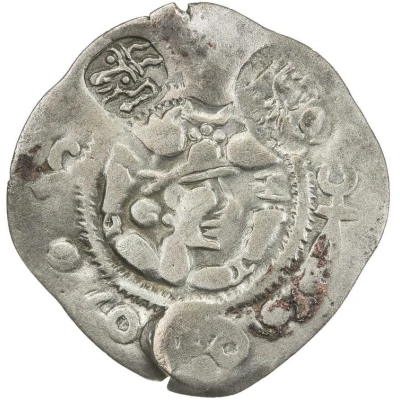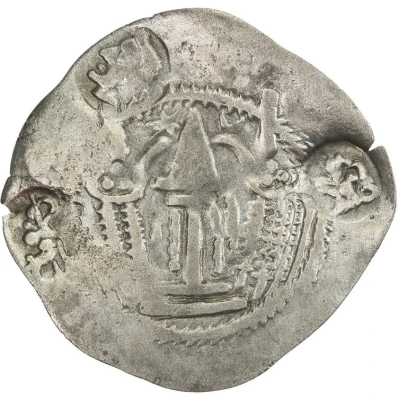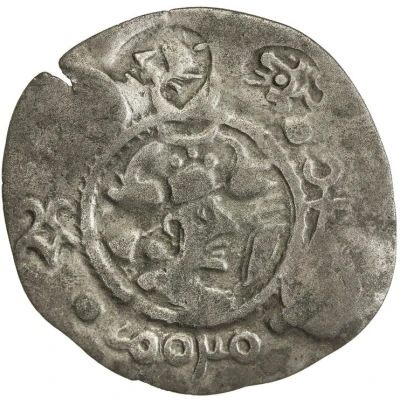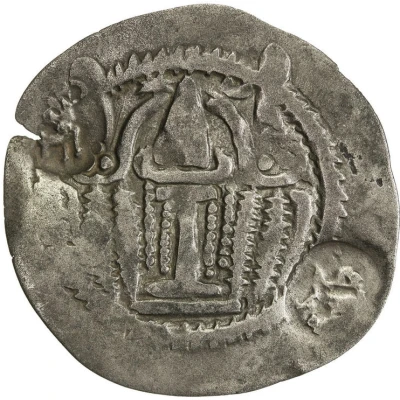


© Stephen Album Rare Coins
1 Drachm Peroz I imitation; Kobadien; countermark types: 1, 2 / 1, 2,
| Billon | 2.85 g | 29 mm |
| Issuer | Kobadien tribes (Sogdiana (ancient)) |
|---|---|
| Type | Standard circulation coin |
| Years | 501-601 |
| Value | 1 Drachm |
| Currency | Drachm (circa 501-601) |
| Composition | Billon |
| Weight | 2.85 g |
| Diameter | 29 mm |
| Shape | Round (irregular) |
| Technique | Countermarked |
| Demonetized | Yes |
| Updated | 2024-10-09 |
| Numista | N#199522 |
|---|---|
| Rarity index | 100% |
Reverse
Fire altar with attendants on either side, all with reverse countermarks of types 1, 2, and 3.
Edge
Plain
Comment
The prototype is a Sasanian drachm of Peroz I (459-484).Three known hoards of these Peroz imitations have been found. The first hoard contained 53 coins with the obverse countermark 1 and the reverse countermark 1. The second hoard contained coins with the same countermarks as the first one, but with the addition of reverse countermark 2. The third hoard countained around 500 coins, all with the same countermarks as the second hoard but with the addition of obverse countermarks 2, 3, and 4 (although not all on the same pieces); and the additional reverse countermark 3.
Five examples are known with the obverse countermark 3 and only one example is known with the obverse countermark 4.
Obverse countermarks:
© Stephen Album Rare Coins
Descriptions:
1) Soldier facing left.
2) Beast partially facing left.
3) Soldier facing right.
4) Arabic word ja'id (meaning Permitted).
References (Zeno; Göbl):
1) Kob#1; Göbl#73
2) Kob#4
3) Kob#6
4) Kob#7
Reverse countermarks:
© Stephen Album Rare Coins
Descriptions:
1) Bust facing left.
2) Forepart of camel and elephant head.
3) Lion's head facing left.
References (Zeno; Göbl):
1) Kob#2; Göbl#72
2) Kob#3
3) Kob#5
Interesting fact
One interesting fact about this coin is that it was made of Billon, which is an alloy of silver and other metals, typically copper or bronze. The use of Billon in coinage was common in ancient times, as it allowed for the creation of coins that appeared to be made of pure silver but were actually made of a less valuable metal. This practice was known as "debasement" and was often used by rulers to increase the quantity of coins in circulation without increasing the amount of precious metal used in their production.

